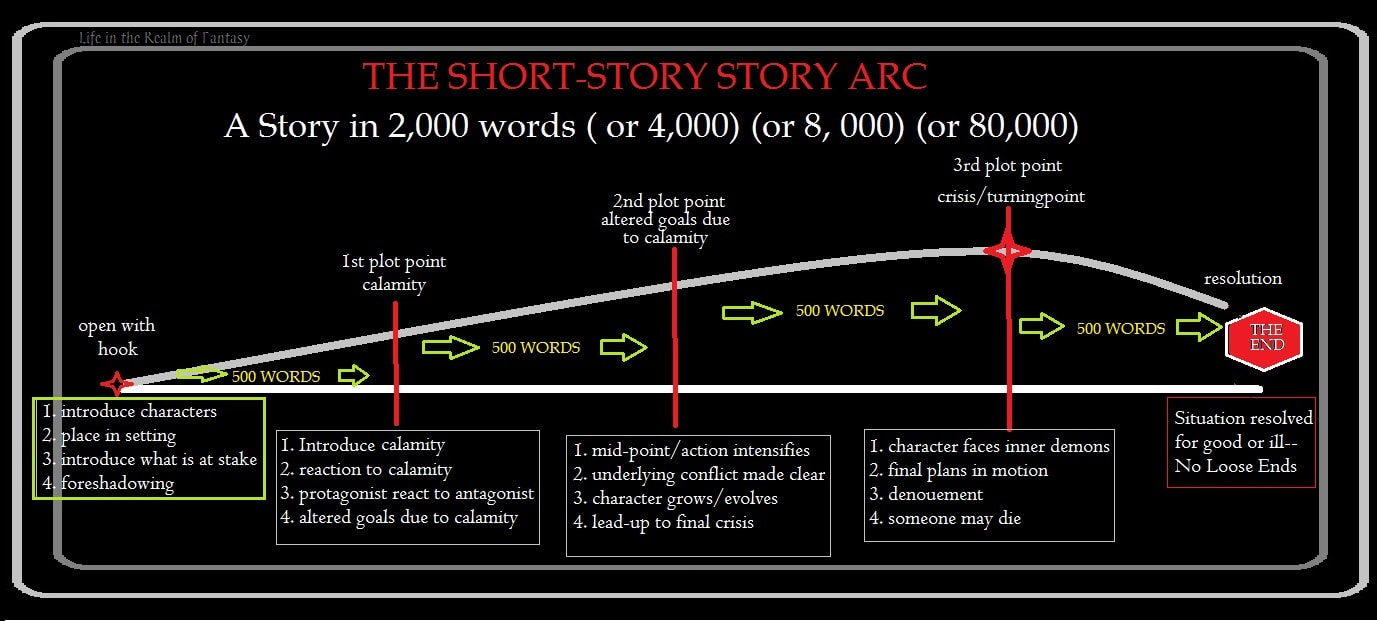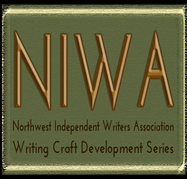 Writing short stories is both difficult and easy. They are easy because you can keep it simple, just a few characters, one problem, and an overarching theme that runs through the whole thing. However, they are difficult because of those same constraints. What are the main considerations when writing a short story? Plot Structure, or the way the story is arranged:
The Set-up: You must have a good hook. In some cases, the first line is the clincher, but especially in a short story, by the end of the first page, you must have your reader hooked and ready to be enthralled. The theme, or the core of the plot, an idea-thread that runs through a story from the opening pages to the end. Theme binds the four primary elements of characters, conversations, actions, and reactions. Theme is independent of the setting or genre. Word Count: Many times, publications and anthologies will have strict limits on the wordcount, such as no more than 4,000 or less than 2,000. When you are new to writing short stories, limiting the background information and sticking to the theme and is the most difficult part of the task. In my own early drafts, I often have a lot of information that doesn’t advance the story. Background information on the sidekicks is not needed, nor is any background on the setting unless the setting is a core plot point. In a short story, you must take one idea and riff on it until you reach the end, and if you are offered a theme to write to, you at least have a framework on which to hang your plot. Wikipedia, the fount of all knowledge, describes theme as: The most common contemporary understanding of theme is an idea or point that is central to a story, which can often be summed in a single word (e.g. love, death, betrayal). Typical examples of themes of this type are: conflict between the individual and society; coming of age; humans in conflict with technology; nostalgia; and the dangers of unchecked ambition. A theme may be exemplified by the actions, utterances, or thoughts of a character in a novel. An example of this would be the theme loneliness in John Steinbeck‘s Of Mice and Men, wherein many of the characters seem to be lonely. It may differ from the thesis—the text’s or author’s implied worldview. Often, we can visualize a complex theme, but we can’t explain it. If we can’t explain it, how do we show it? Consider the theme of “grief.” It is a common emotion that can play out against any backdrop, sci-fi or reality based, where there are humans interacting on an emotional level. Perhaps you have an idea for a story about a woman who has just lost her husband to a preventable accident. Her grief is the main theme. When you learn the accident that killed him was preventable, you know the subtheme: anger. The protagonist’s goal in this story is to prevent such accidents from happening again–perhaps she must battle a corporation or take on a government agency. Rage is the motivator that forces her to wake up each day and take on the Goliaths, but at the root of the story, it is her grief that is the driving force behind her subsequent actions. Grief is an extremely complex experience, as anyone who has ever suffered the loss of a loved one will tell you.
Once your protagonist has beaten the enemy, what is her reaction? Without the battle to sustain her rage, does she learn to accept her loss begin to find happiness? Or does she allow herself to spiral into ever worsening depression? When writing short stories,
You need to map it out. Short-stories are just like novels, in that they follow the story arc. If you know what theme you must write to and you have an idea for a plot, you can make the story arc work for you. The following illustration is a visual guide to help you when mapping out your short story: ______________________________________________________________ Credits: Wikipedia contributors, “Theme (narrative),” Wikipedia, The Free Encyclopedia, https://en.wikipedia.org/w/index.php?title=Theme_(narrative)&oldid=765573400 (accessed June 20, 2017). The Short Story Arc, graphic by Connie J. Jasperson ©2015 All Rights Reserved, used by permission. Connie J. Jasperson is an author and blogger and can be found blogging regularly at Life in the Realm of Fantasy.
0 Comments
Leave a Reply. |
Archives
January 2023
Categories |

 RSS Feed
RSS Feed